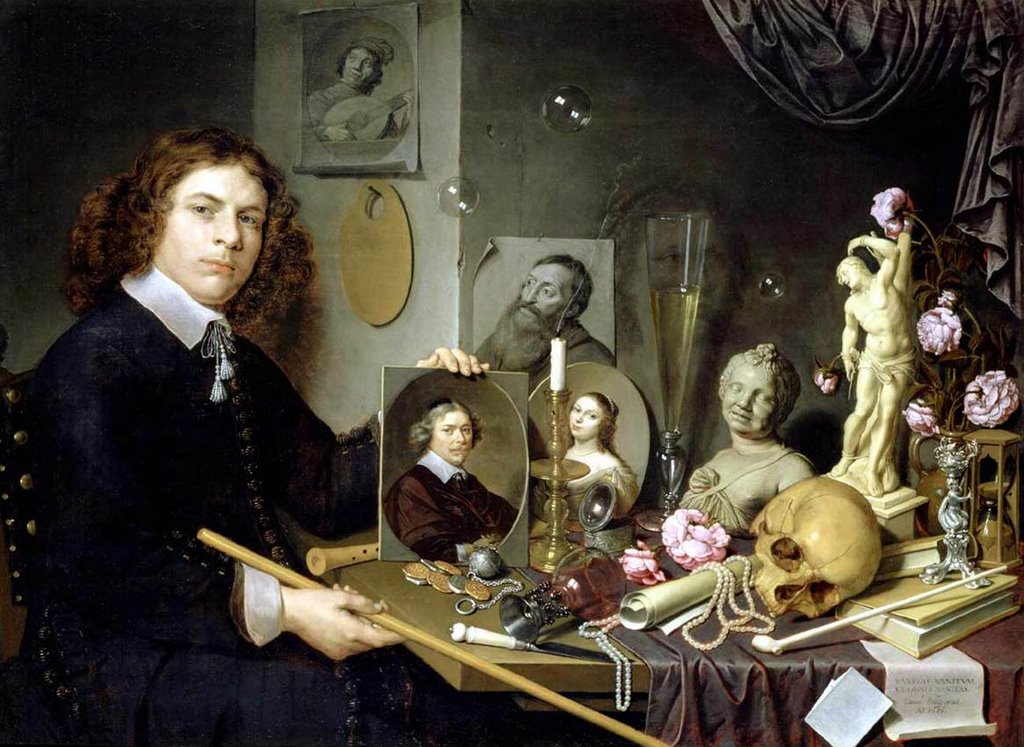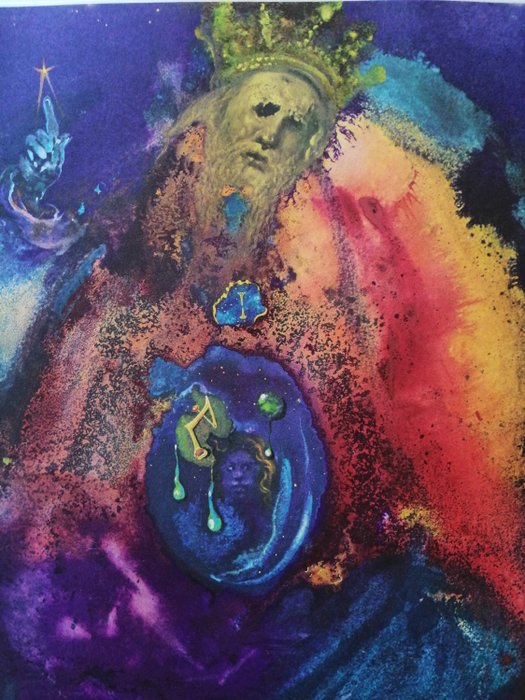
fioredelcappero Vanitas vanitatum et omnia vanitas
9780198609810 Published online: 2006 Current Online Version: 2006 eISBN: 9780191727047 Find at OUP.com Google Preview vanitas vanitatum vanity of vanities, futility (frequently as an exclamation of disillusionment or pessimism). The phrase is late Latin and comes from the Vulgate translation of Ecclesiastes 1:2

Vanitas vanitatum omnia vanitas Flickr
VANITAS VANITATUM, OMNIA VANITAS. IN all we do, and hear, and see, Is restless Toil, and Vanity. While yet the rolling earth abides, Men come and go like ocean tides; And as they rise, they pass away. The sun arises every day, And hastening onward to the West, He nightly sinks, but not to rest: Returning to the eastern skies, Again to light us.

CLAESZ, Pieter Vanitas StillLife 165960 Bullen
Quick Reference Vanity of vanities, futility (frequently as an exclamation of disillusionment or pessimism). The phrase is late Latin and comes from the Vulgate translation of Ecclesiastes 1:2. From: vanitas vanitatum in The Oxford Dictionary of Phrase and Fable » Related content in Oxford Reference Reference entries vanitas vanitatum

Nicolaes Maes Vanitas vanitatum, omnia vanitas (Vanity of vanities
Now blowing keenly from the North; Now from the South, the East, the West, For ever changing, ne'er at rest. The fountains, gushing from the hills, Supply the ever-running rills; The thirsty rivers drink their store, And bear it rolling to the shore, But still the ocean craves for more. 'Tis endless labour everywhere!

A Arte Moderna VANITAS VANITATUM
About this article vanitas vanitatum vanity of vanities, futility (frequently as an exclamation of disillusionment or pessimism). The phrase is late Latin and comes from the Vulgate translation of Ecclesiastes 1:2. Source for information on vanitas vanitatum: The Oxford Dictionary of Phrase and Fable dictionary.

Agostino Arrivabene Vanitas vanitatum Vanitas, Vanitas vanitatum
'Vanitas vanitatum (Ecclesiastes 1:12f)' was created in 1964 by Salvador Dali in Abstract Expressionism style. Find more prominent pieces of religious painting at Wikiart.org - best visual art database.

Vanitas vanitatum et omnia vanitas
All bewitching appetites! Sweetest breath and clearest eye, Like perfumes, go out and die; And consequently this is done. As shadows wait upon the sun. Vain ambition of kings. Who seek by trophies and dead things. To leave a living name behind, And weave but nets to catch the wind.

Vanitas, Vanitas vanitatum, Vanitas paintings
Vanitas - Detailed Definition, History and Examples. Vanitas was an art form that began in the 16th and 17th centuries, which existed as a symbolic type of artwork that demonstrated the temporality and futility of life and pleasure. The most well-known genre to come out of the Vanitas theme was that of the still life, which was incredibly.

22 best Vanitas vanitatum, et omnia vanitas images on Pinterest
In Western art, vanitas painting is a genre of still life artwork that is intended to remind the viewer of the transience of life and the worthlessness of earthly pleasures. Vanitas paintings remind viewers of their own mortality by including objects symbolic of both life and death, such as skulls, lit and extinguished candles, books, wilted.

All sizes Vanitas, vanitatum et omnia vanitas IMG_4645001 Flickr
vanitas vanitatum omnia vanitas: vanity of vanities; everything [is] vanity: Or more simply: "vanity, vanity, everything vanity". From the Vulgate, Ecclesiastes 1:2;12:8. vaticinium ex eventu: prophecy from the event: A purported prediction stated as if it was made before the event it describes, while in fact being made thereafter. vel non: or not

Vanitas vanitatum et omnia vanitas on Behance
A virtus nagy tűneményi Gőz, mit hagymáz lehele; A kebel lángérzeményi Vértolúl s kínjele; A vég, melyet Sokrat ére, Catonak kihulló vére, S Zrínyi Miklós szent pora Egy bohóság láncsora.

Vanitas vanitatum omnia vanitas, 2012. on Behance
A Latin quote from Ecclesiastes 1:2 is shown as engraved in the cup at the top of the jester's staff on the right: 'Vanitas vanitatum et omnia vanitas' ("Vanity of vanities, all is vanity") and below the map is a text taken from the Vulgate translation of Ecclesiastes 1:15: 'Stultorum infinitus est numerus' [17] ("The number of fools is infinite").

Vanitas paintings, Vanitas vanitatum, Vanitas
2 Vanitas vanitatum, dixit Ecclesiastes; vanitas vanitatum, et omnia vanitas. 3 Quid habet amplius homo de universo labore suo quo laborat sub sole? 4 Generatio praeterit, et generatio advenit; terra autem in aeternum stat. 5 Oritur sol et occidit, et ad locum suum revertitur; ibique renascens, 6 gyrat per meridiem, et flectitur ad aquilonem. . Lustrans universa in circuitu pergit spiritus, et.

"St. Jerome" Vanitas Vanitatum, Omnia Vanitas. Painted Flanders
vanitas, (from Latin vanitas, "vanity"), in art, a genre of still-life painting that flourished in the Netherlands in the early 17th century. A vanitas painting contains collections of objects symbolic of the inevitability of death and the transience and vanity of earthly achievements and pleasures; it exhorts the viewer to consider mortality and to repent.

Salvador Dali (19041989) Vanitas Vanitatum Omnia Vanitas Catawiki
Vanitas paintings take their name from Ecclesiastes 1:2; 12:8 from the King James Bible: Vanitas vanitatum omnia vanitas, "Vanity of vanities, all is vanity." Vanitas artwork also allowed artists during religious eras like the Northern Renaissance a sneaky excuse to paint still-lifes of beautiful, decadent objects behind a moral facade.

FileHarmen Steenwijck Vanitas.JPG Wikimedia Commons in 2021
The Ozymandian flavouring of the Latin from Ecclesiastes - ' Vanitas Vanitatum ' may be taken as an expression of disillusionment and emptiness - undermines the instinctive human claim to attainment and endurance.